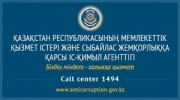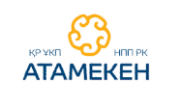
As part of the information and explanatory work, the Department of State Revenue in Almaty (hereinafter - DGD) informs about the entry into force of amendments to the Rules for making Non-cash Payments and (or) Money Transfers in the territory of the Republic of Kazakhstan, approved by Resolution No. 208 of the Board of the National Bank of the Republic of Kazakhstan dated August 31, 2016. These changes are related to the transition of payment systems of Kazakhstan to the international standard of the ISO 20022 payment message format, which was implemented by the National Bank of the Republic of Kazakhstan Kazakhstan since January 13, 2025.
In accordance with the new requirements, the payment order form for payments to the budget has been supplemented with the columns "Actual payer" and "Sender of money".
We would like to draw taxpayers' special attention to the order in which these graphs are filled in.:
When a legal entity pays payments to the budget, as well as social payments for its separate division:
- the "Actual payer" column indicates the name of the separate unit for which the payment is being made.;
- the "IIN (BIN)" column indicates the BIN of this separate unit;
- the payment will be credited to the personal account of the structural unit if the BIN of the parent organization is indicated in the "Sender of money" column.
When the bailiff pays payments to the budget within the framework of enforcement proceedings for the debtor:
- in the "Actual payer" column, the last name, first name, patronymic (if any) of the debtor is indicated;
- the column "IIN (BIN)" indicates the debtor's IIN/BIN;
- the payment will be credited to the debtor's personal account if the details of the bailiff are indicated in the "Sender of money" column.
In all other cases, payments to the budget are deposited to the taxpayer's personal account using the IIN/BIN indicated in the "Sender of money" column.
The DGA of Almaty strongly recommends that taxpayers strictly follow the specified rules for filling out payment documents in order to avoid incorrect distribution of payments and the formation of unclear amounts.




























